Through small steps and big dreams over the past 25 years, we’ve worked toward a future of plastic-free waters, lush landscapes and thriving wildlife populations. From our first sea turtle patient triaged in a kiddie pool to the inception of a formalized conservation department in 2015 and beyond, our efforts have expanded alongside our commitment to the community.
The Sea Turtle That Started It All (2000)
When the Aquarium opened, there was no formal plan to rehabilitate sea turtles. That is, until we got the call about a debilitated loggerhead whom we lovingly named “Stinky”! This first sea turtle patient sparked our decades-long movement to save sea turtles through rescue, rehabilitation and release.
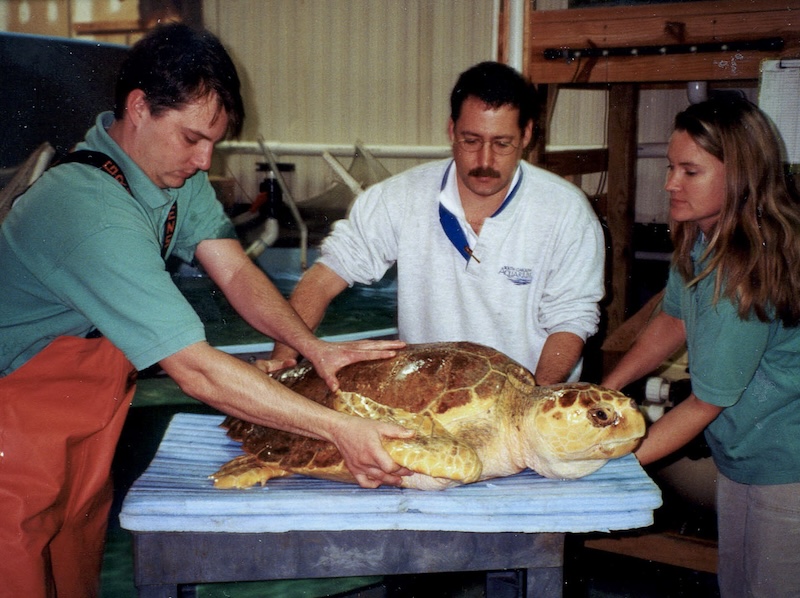 Stinky, a loggerhead sea turtle, was our first patient.
Stinky, a loggerhead sea turtle, was our first patient.Stepping Into Sustainable Seafood (2002)
Connecting to another major economic driver in the area — the food and beverage industry — we sparked awareness on how humans can impact the health of our oceans by what we choose to put on our plates. Now known as Good Catch, this program leads and encourages communities to support local, sustainable seafood practices and consume responsibly harvested seafood.
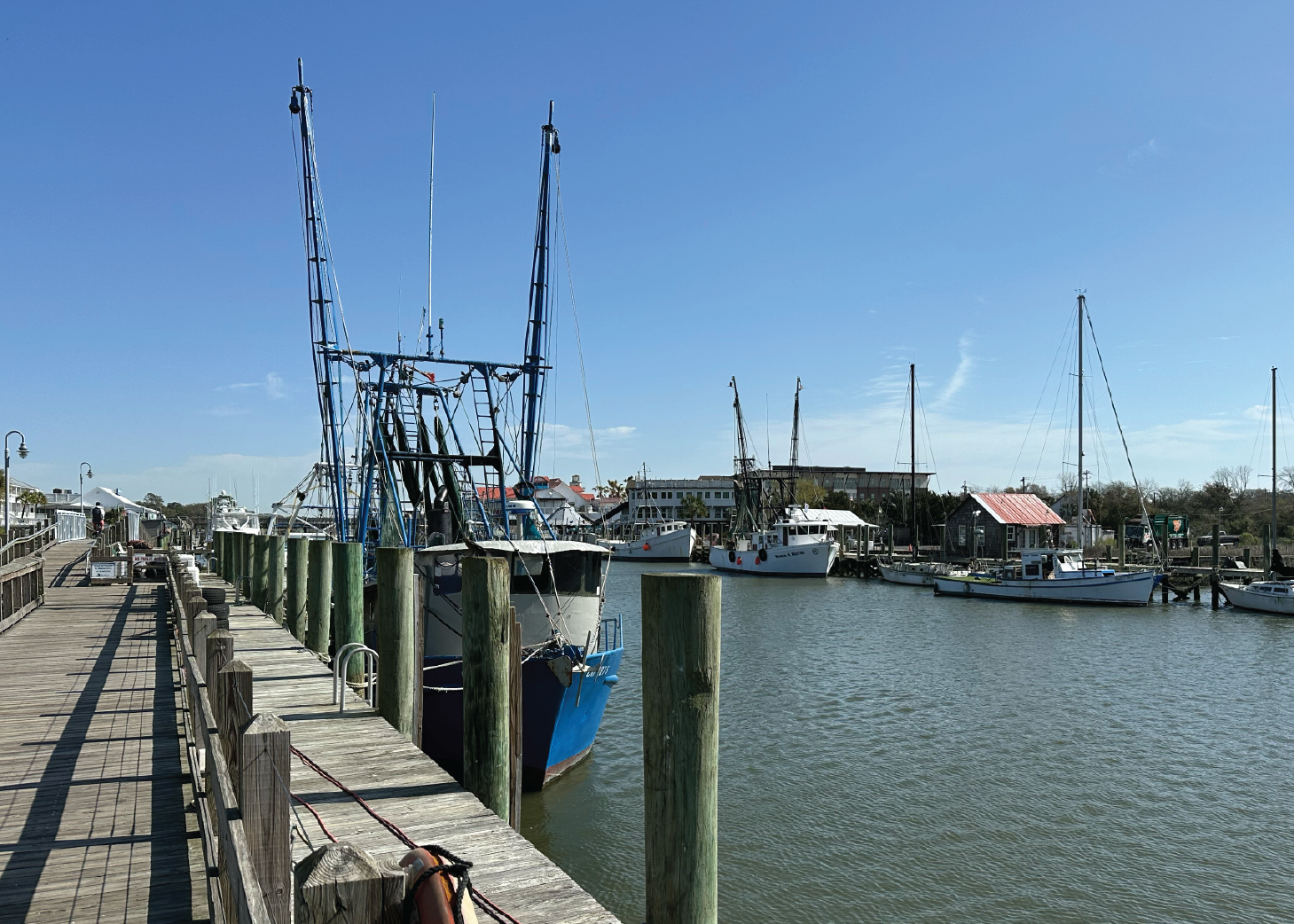 Shrimp boats docked in Shem Creek are among many in the Lowcountry that provide the region with fresh shrimp.
Shrimp boats docked in Shem Creek are among many in the Lowcountry that provide the region with fresh shrimp.Meeting this Mama at the Beach (2003)
As our sea turtle rehabilitation efforts expanded, so did the community’s interest and support. When adult loggerhead sea turtle Edisto Mama was ready for release, we celebrated alongside our supporters by hosting the first public sea turtle release on Edisto Beach, setting us up for many more exciting, tearful and joyous future release experiences.
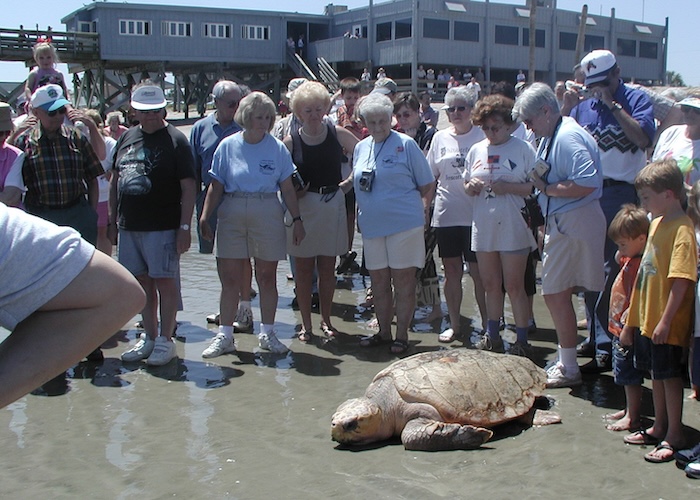 Edisto Mama was cheered on by a joyful crowd as she made her way to the water.
Edisto Mama was cheered on by a joyful crowd as she made her way to the water. Dedicating Space to Sea Turtle Rehabilitation (2004)
After a few years of rehabilitating sea turtles wherever tank space was available, we established a formal sea turtle rehabilitation hospital in the basement of the Aquarium! The creation of this dedicated space and program solidified that sea turtle conservation was a core aspect of our Aquarium.
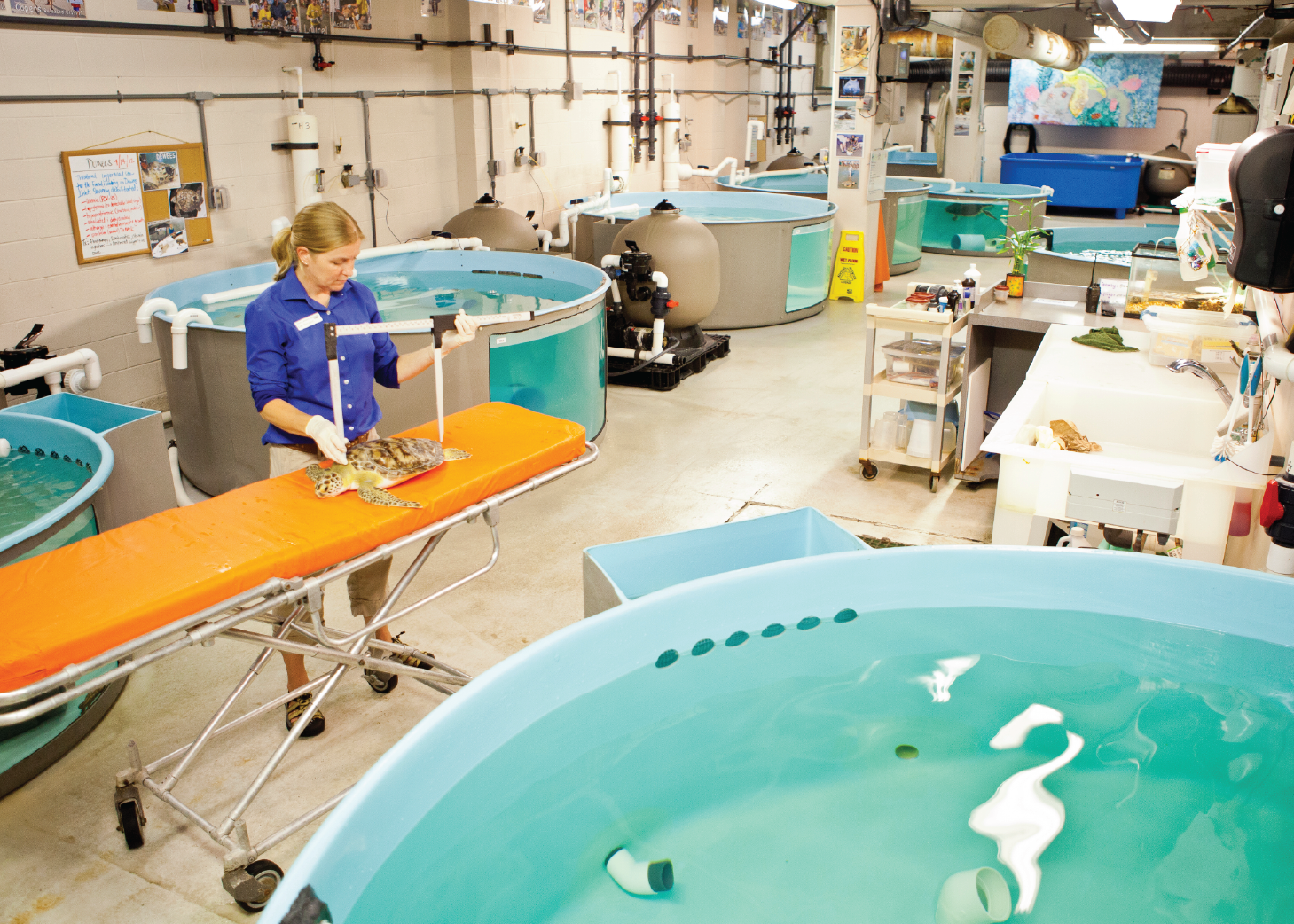 The sea turtle hospital in the basement remains a critical care space for our patients.
The sea turtle hospital in the basement remains a critical care space for our patients.A Happy Future for Hatchlings (2008)
Mama Pritchard was our largest loggerhead sea turtle patient (360 pounds!) to undergo rehabilitation and release. This gorgeous loggerhead mama has since been identified successfully nesting numerous times since her release, and even before, exemplifying the long-term population impact that saving just one sea turtle can have.
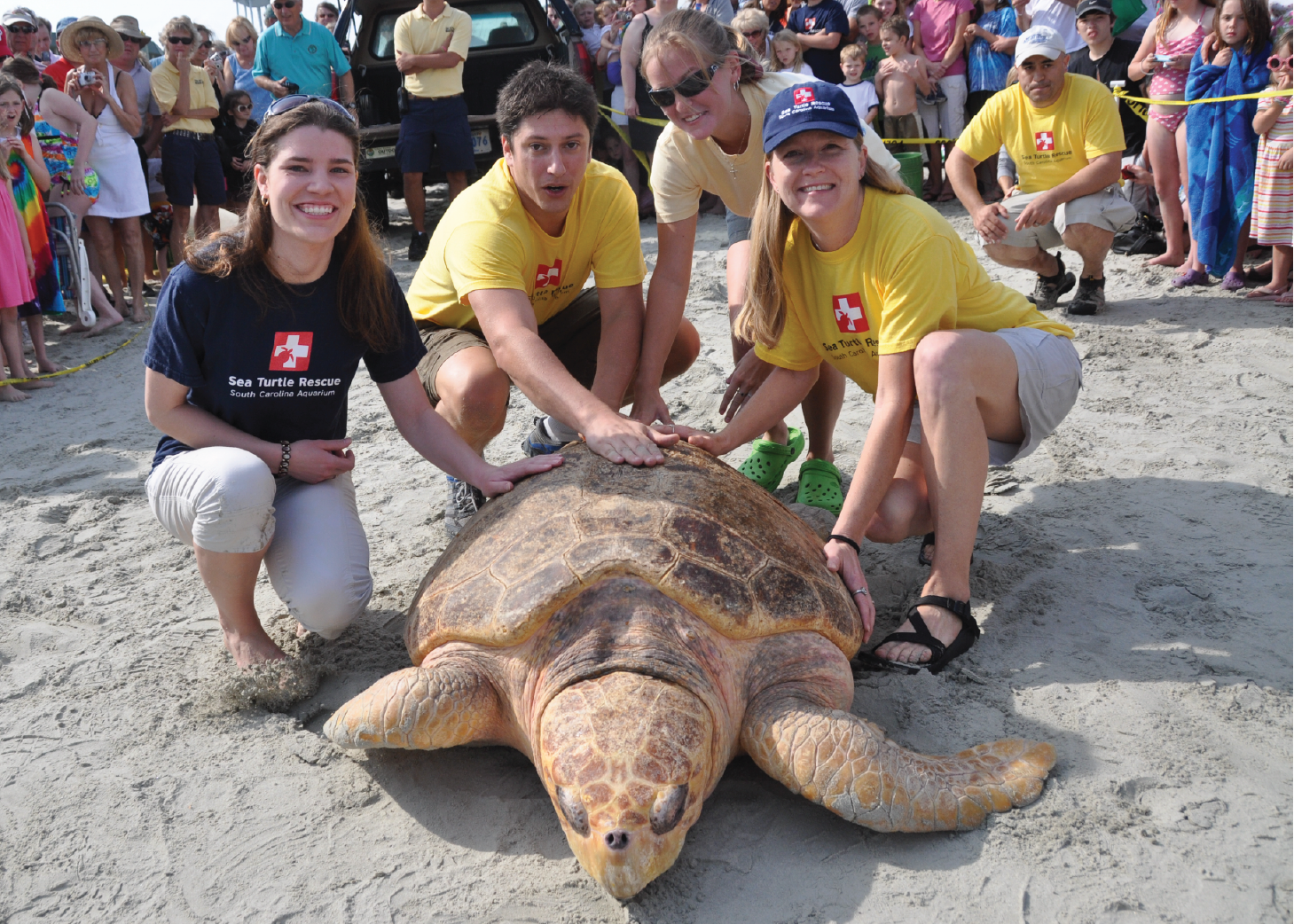 Mama Pritchard has nested in 2002, 2004, 2008, 2013, 2015, 2017, 2019, 2021 and 2023!
Mama Pritchard has nested in 2002, 2004, 2008, 2013, 2015, 2017, 2019, 2021 and 2023!Surveying an Ancient Species (2013)
Researching population dynamics of an ancient species is no small task. We began collecting data for the South Carolina Department of Natural Resources (SCDNR) and U.S. Fish and Wildlife Service (USFWS) by surveying horseshoe crabs and their nests. In finding their nesting beaches and tagging the crabs during spawning, we collect important data for these agencies to use when protecting this living fossil!
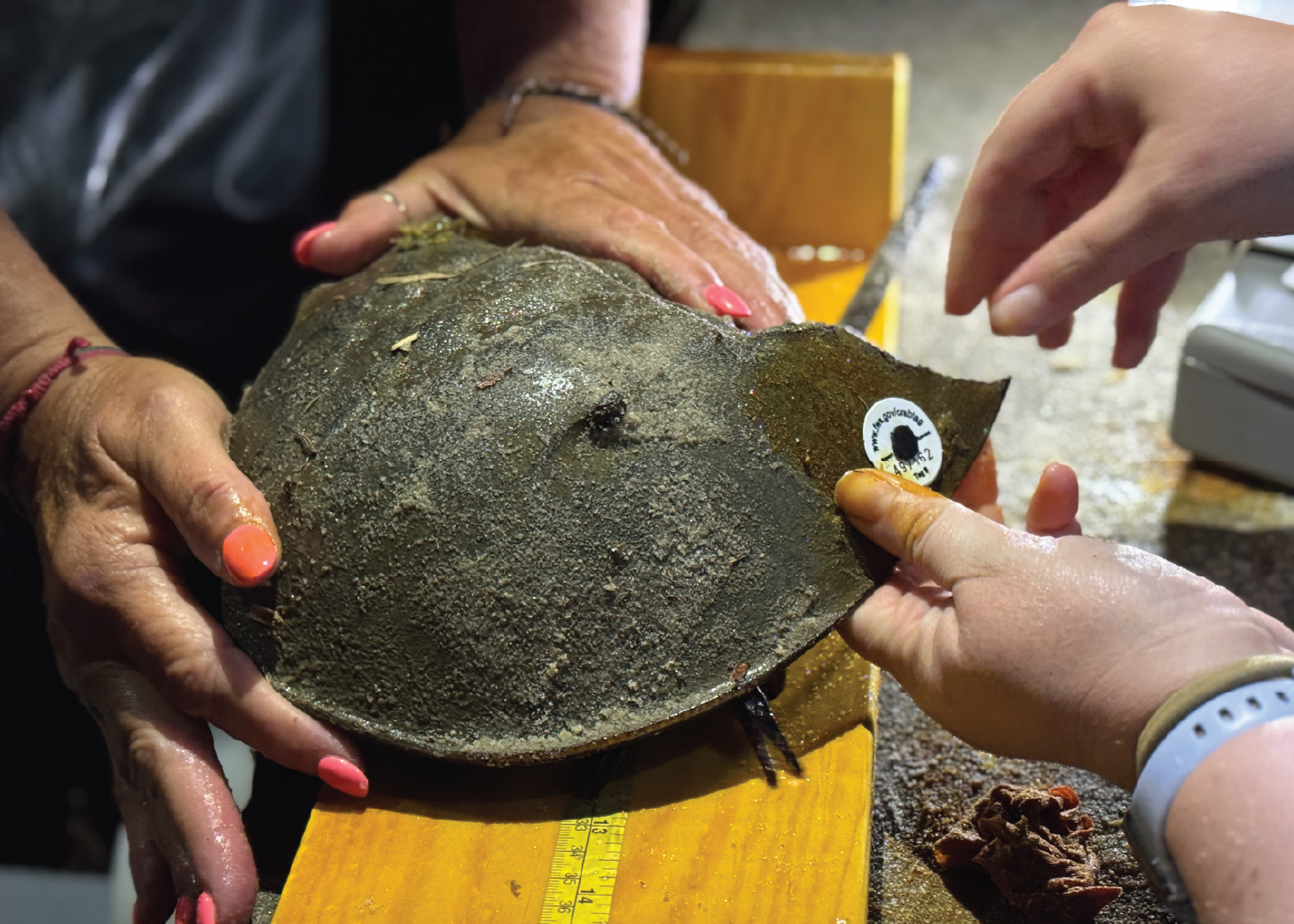 Lightweight identification tags are applied to the edge of the crabs' shells.
Lightweight identification tags are applied to the edge of the crabs' shells. Documenting Novel Dolphin Behavior (2014)
When humans and wildlife share a habitat, the outcome can be one of great discovery and learning. Among the research monitoring the bottlenose dolphin distribution and abundance in the Charleston Harbor, we discovered a novel method of feeding for this population: shipside feeding! This research — and understanding how dolphins adapt to a shared environment with humans — is giving us and others greater insight on how to protect them for future generations.
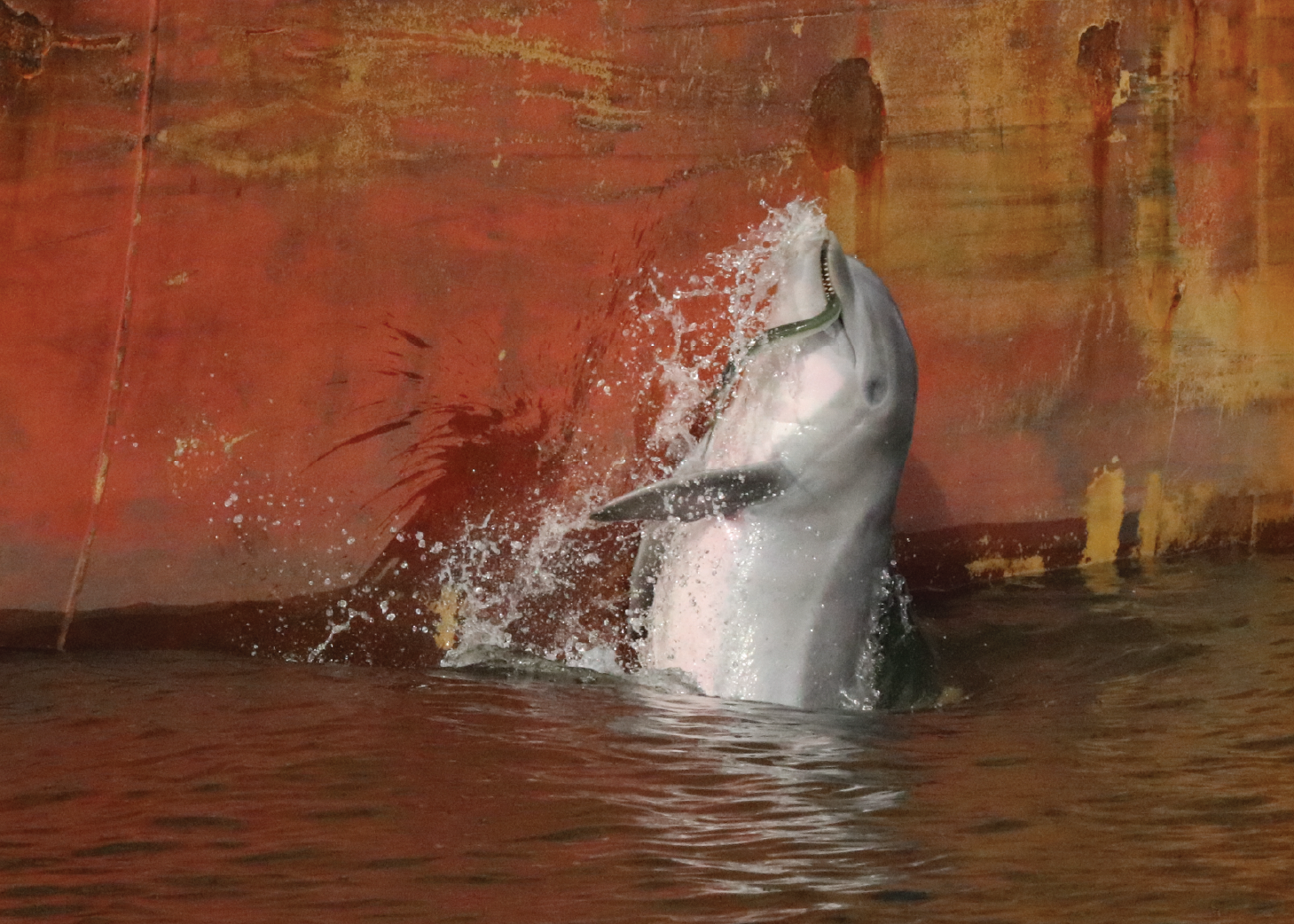 A dolphin demonstrates shipside feeding off of a docked vessel in the Charleston Harbor. Photo by MGalipeau, LOC18859
A dolphin demonstrates shipside feeding off of a docked vessel in the Charleston Harbor. Photo by MGalipeau, LOC18859Straight to the Source (2016)
We cannot address climate change without considering its impact on a local level. So, we went to the source and hosted listening sessions in four coastal communities in Georgia and South Carolina. These sessions enabled us to gain firsthand accounts of the residents’ concerns, encouraged solutions-driven conversations and solidified our commitment to serving our communities where they need us most.
 We continue to build trust by keeping residents involved every step of the way.
We continue to build trust by keeping residents involved every step of the way. Get This, It’s a Good Catch (2017)
As environmental stressors like plastic pollution and climate change gained notoriety, we recognized a need to reevaluate our sustainable seafood criteria accordingly. So, Good Catch went local! A “good catch” was redefined as seafood from the U.S. southeast region, ensuring it had a lower carbon footprint with fewer food miles traveled and followed strict fisheries regulations to protect individual species’ populations. Additionally, partners committed to plastic reduction guidelines in their businesses. This new era boosted our local seafood economy and brought awareness to the intrinsic link between plastic pollution, climate change and sustainable seafood.
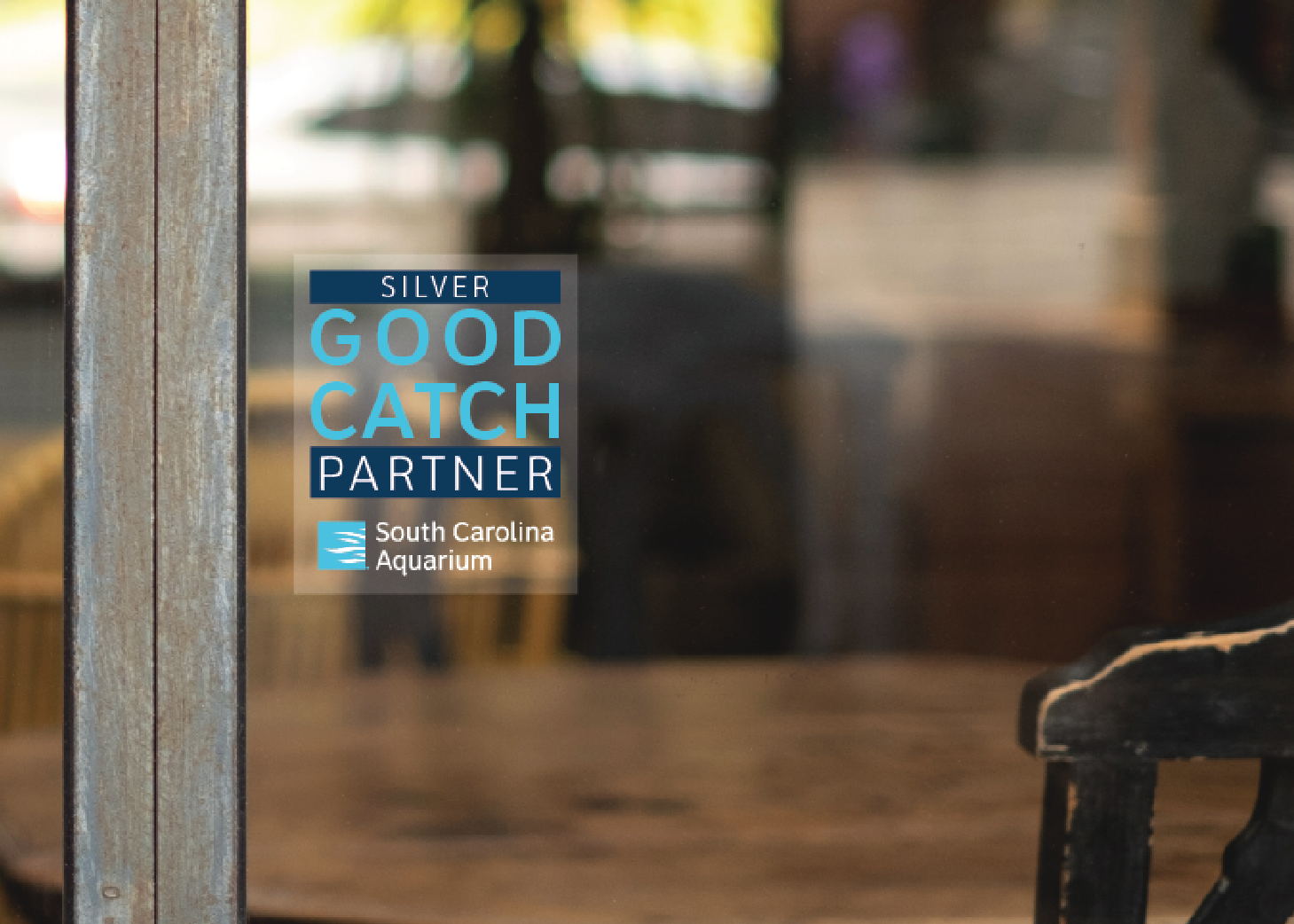 Good Catch partners can be identified by the decals posted at their place of business.
Good Catch partners can be identified by the decals posted at their place of business.Taking Conservation Efforts Offshore (2017)
To highlight the importance of marine protected areas (MPAs) for scientific discovery and for sustaining a balanced ocean, we created Reef Research. In partnership with SCDNR, we led a research project at two MPAs made of artificial reefs — the first of their kind in the nation — where we studied the impacts of invasive lionfish on native species. This work amplified our connection to the natural world beyond our walls and our role in protecting it. Since then, we have culled thousands of lionfish and constructed additional artificial reefs to create new habitats for life offshore.
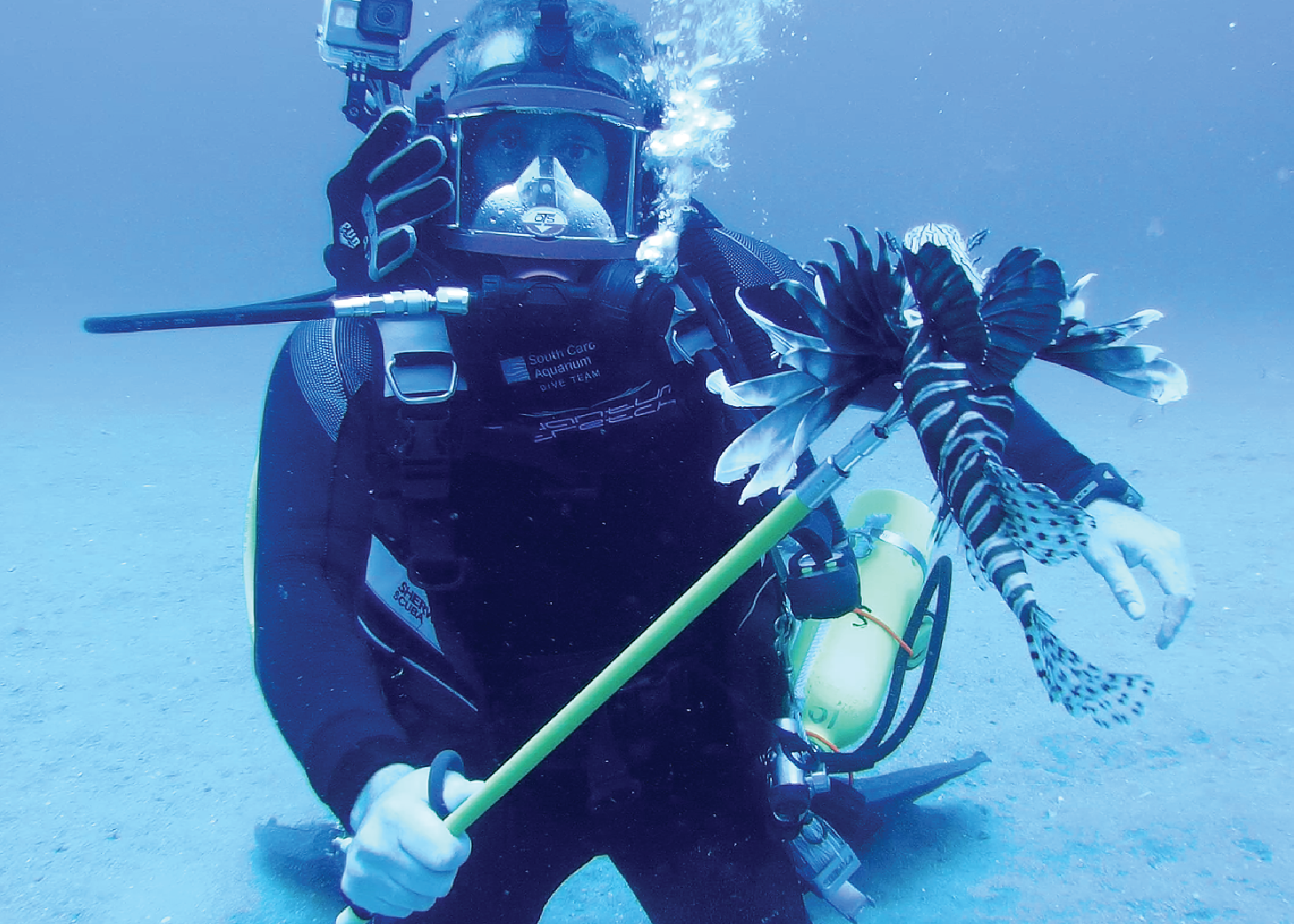 Culling the invasive lionfish makes space for our native species to thrive on the reef!
Culling the invasive lionfish makes space for our native species to thrive on the reef!Breaking Down the Plastic Problem Together (2017)
Moving from a global perspective to local solutions, Breaking Down Plastic brought together a diverse group of researchers and community leaders and members in a multi-day summit of seminars and workshops to discuss solutions to the plastic pollution crisis. This event fostered critical conversations, amplified future action and launched us into the next era of addressing plastic pollution locally and beyond.
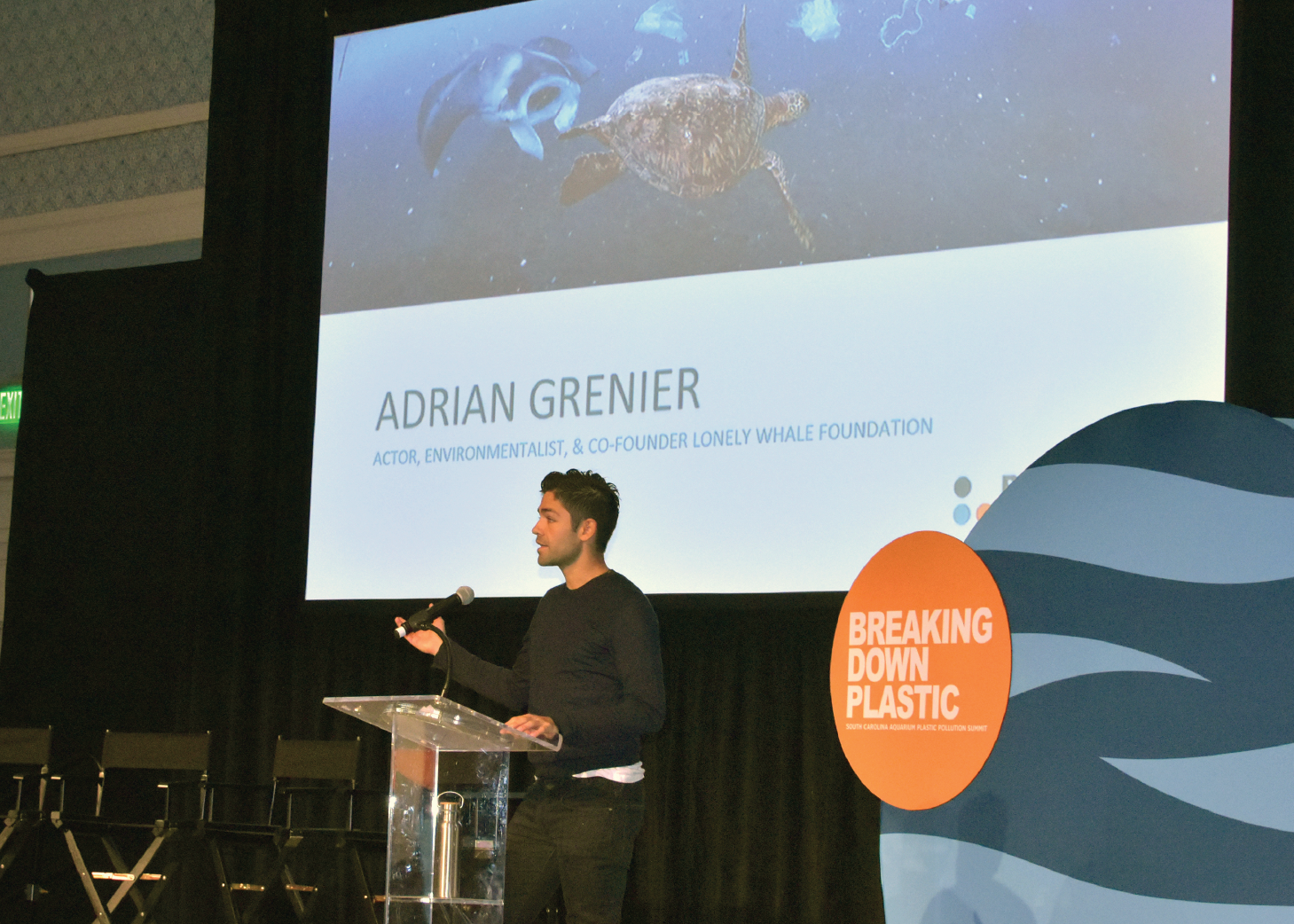 Actor and environmentalist Adrien Grenier was among the many speakers at this event.
Actor and environmentalist Adrien Grenier was among the many speakers at this event.Collecting Data from Citizen Scientists (2017)
Creating a platform for everyday citizens to take action came to fruition with the South Carolina Aquarium Citizen Science app. Featuring projects related to plastic pollution, flooding, sustainable seafood and wildlife interactions with marine debris, this app provides community members the opportunity to contribute to crowd-sourced data, which is used to inform solutions-driven decision making. This invaluable data has already been used to support environmental legislation across the state!
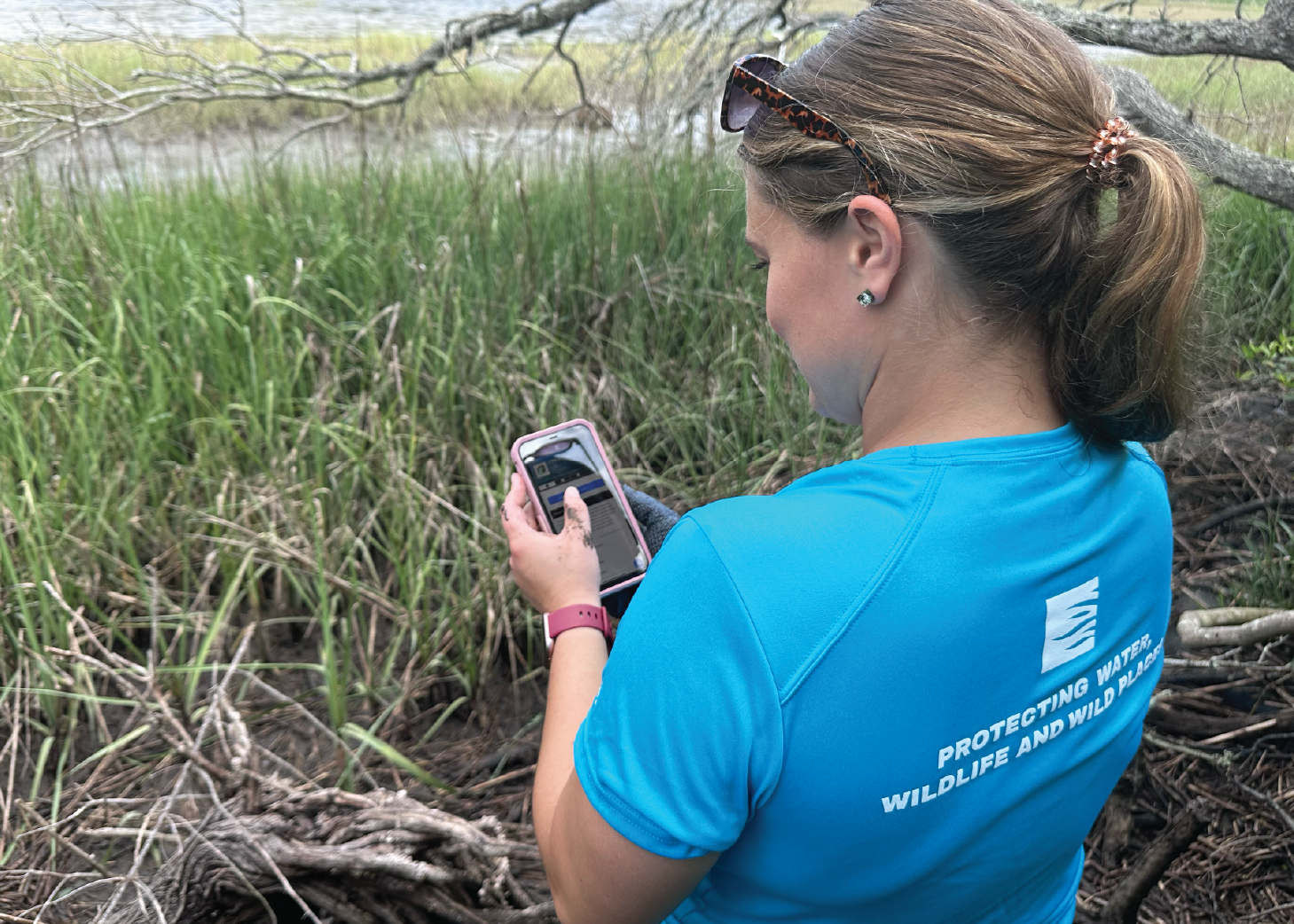 With the tap of a button, you can become a citizen scientist, too!
With the tap of a button, you can become a citizen scientist, too!Sea Turtle Rehabilitation Reaches Every Guest (2017)
For the first time since opening, every Aquarium guest could witness sea turtle rehabilitation in action when hospital operations officially expanded to the first floor of the Aquarium! Now, guests can come face-to-face with patients, watch surgical procedures and learn ways to save sea turtles through their daily actions.
 Guests can learn to be a biologist while examining sea turtle patients.
Guests can learn to be a biologist while examining sea turtle patients.Data Drives Decisions (2018–2024)
Utilizing data collected during litter sweeps logged in the Litter Journal, a project located in the South Carolina Aquarium Citizen Science app, we provided public testimony in multiple city council meetings to ban harmful single-use plastic and smoking on two area beaches. Thanks to contributions of hundreds of citizen scientists, we’re able to track how these ordinances are working and continue supplying data for future legislation!
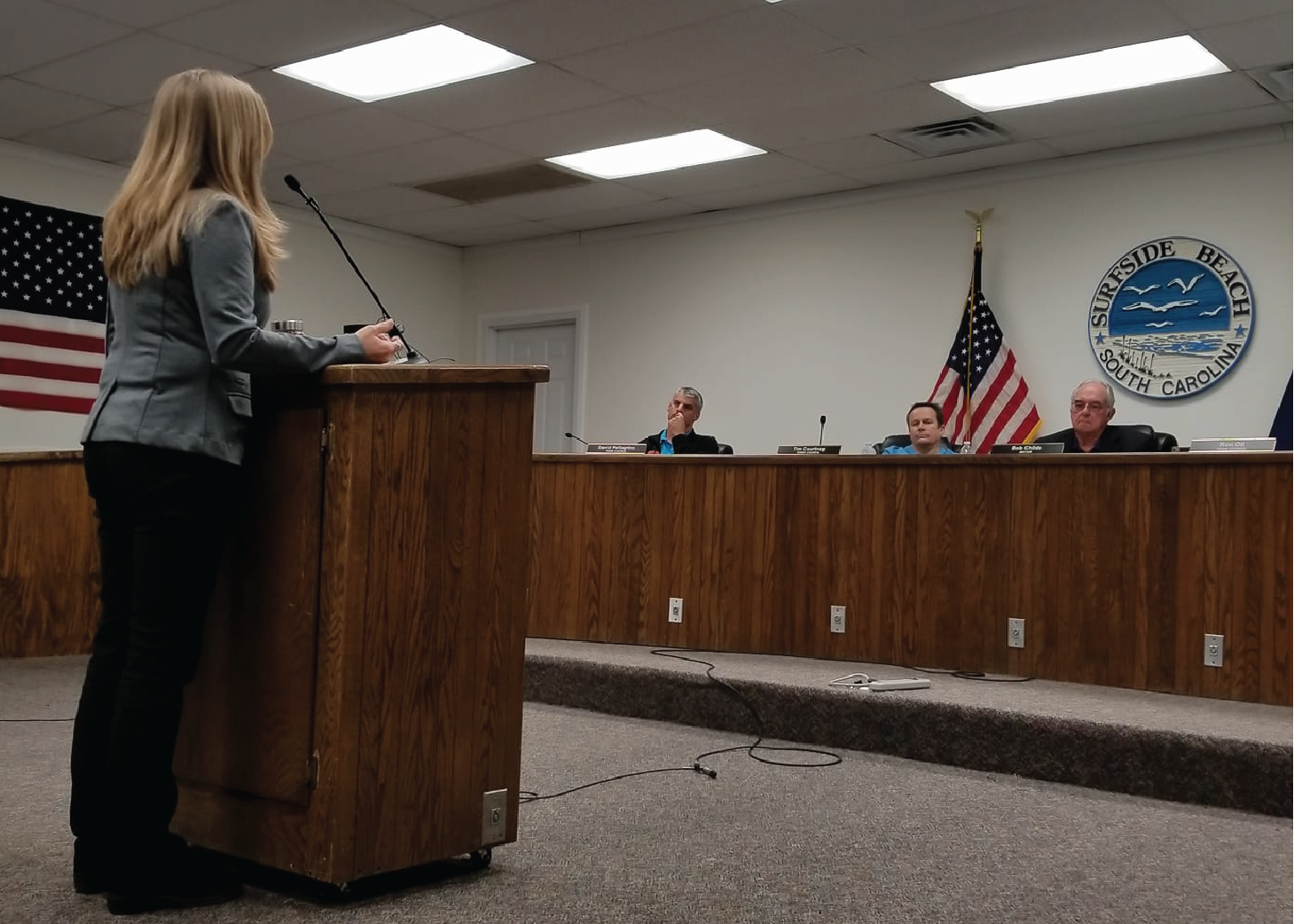 Supporting legislative change is a major step toward a future of plastic-free waters!
Supporting legislative change is a major step toward a future of plastic-free waters!Strengthening the Saltmarsh (2020)
After decades of environmental stressors, a community came to us for help in rejuvenating their beloved saltmarsh. We began working with the SCDNR, Georgia Institute of Technology and Robinson Design Engineers on a plan to renourish this saltmarsh ecosystem through saltmarsh grass plantings, innovative tidal creek excavations and oyster reef builds. This project set the example for working with the landscape, not against it.
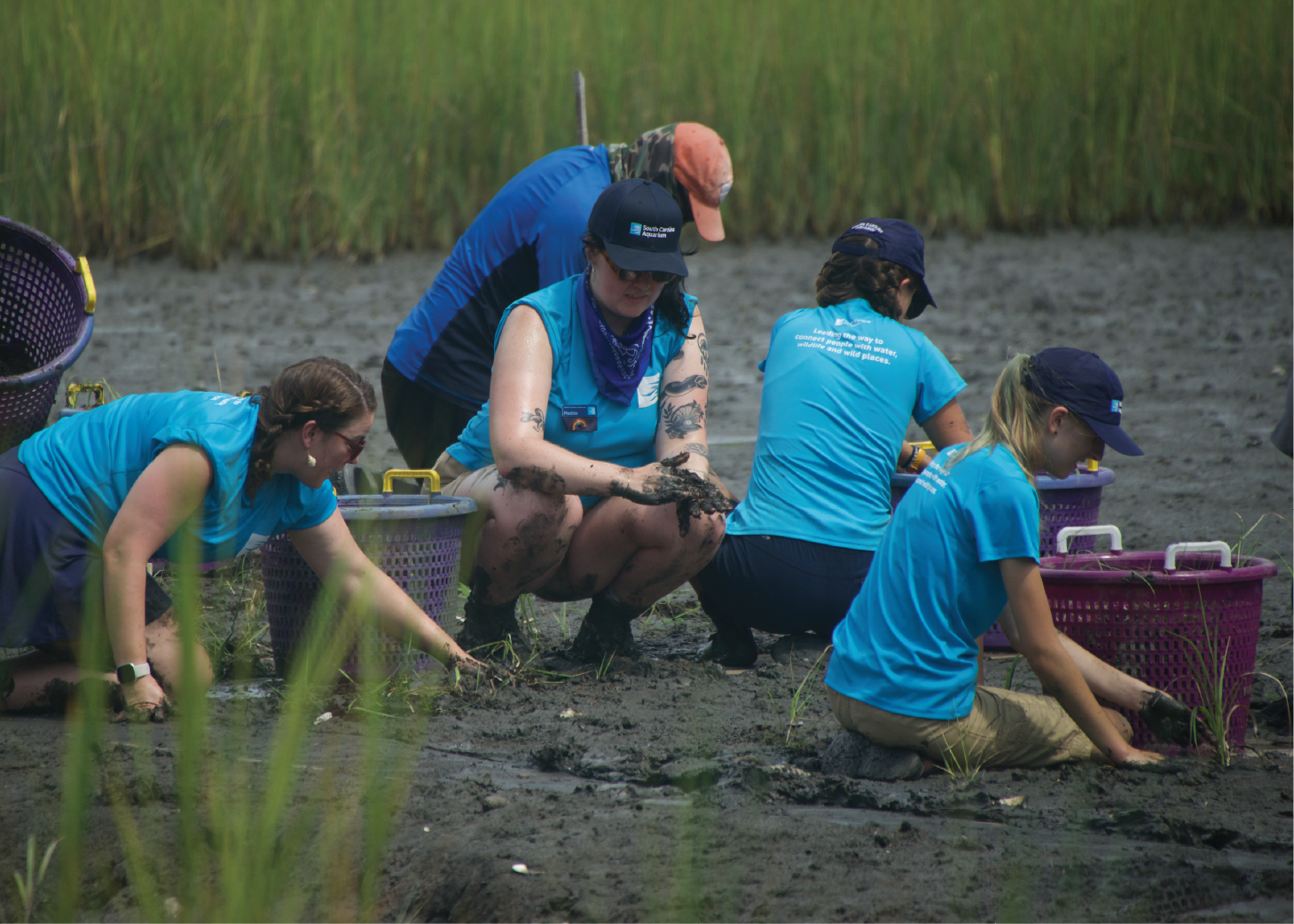 Planting saltmarsh grasses stabilizes the sediment and promotes a biodiverse ecosystem.
Planting saltmarsh grasses stabilizes the sediment and promotes a biodiverse ecosystem.Addressing Food Insecurity (2023)
Recognizing the reality that many of our neighbors face food insecurity, we established Good Catch Seafood Connection. Interweaving community partners with unique expertise and resources, Seafood Connection provides 5,000 free meals annually, supports local fishermen, keeps local seafood truly local and enables culinary students to gain critical skills to build their future through the lens of local seafood.
 Shrimp and swordfish are among the sustainable species included in this program.
Shrimp and swordfish are among the sustainable species included in this program. Facing Floodwaters (2023)
We are no stranger to flooding in the Lowcountry! We installed our SeaRise signs to provide an easily accessible way for community members to document flooding in their neighborhoods. Photos and data of flooding at each sign are uploaded into the SeaRise Project, located in the South Carolina Aquarium Citizen Science app, and have been used by researchers to better inform flood models and assist decision makers in community-specific solutions to flooding.
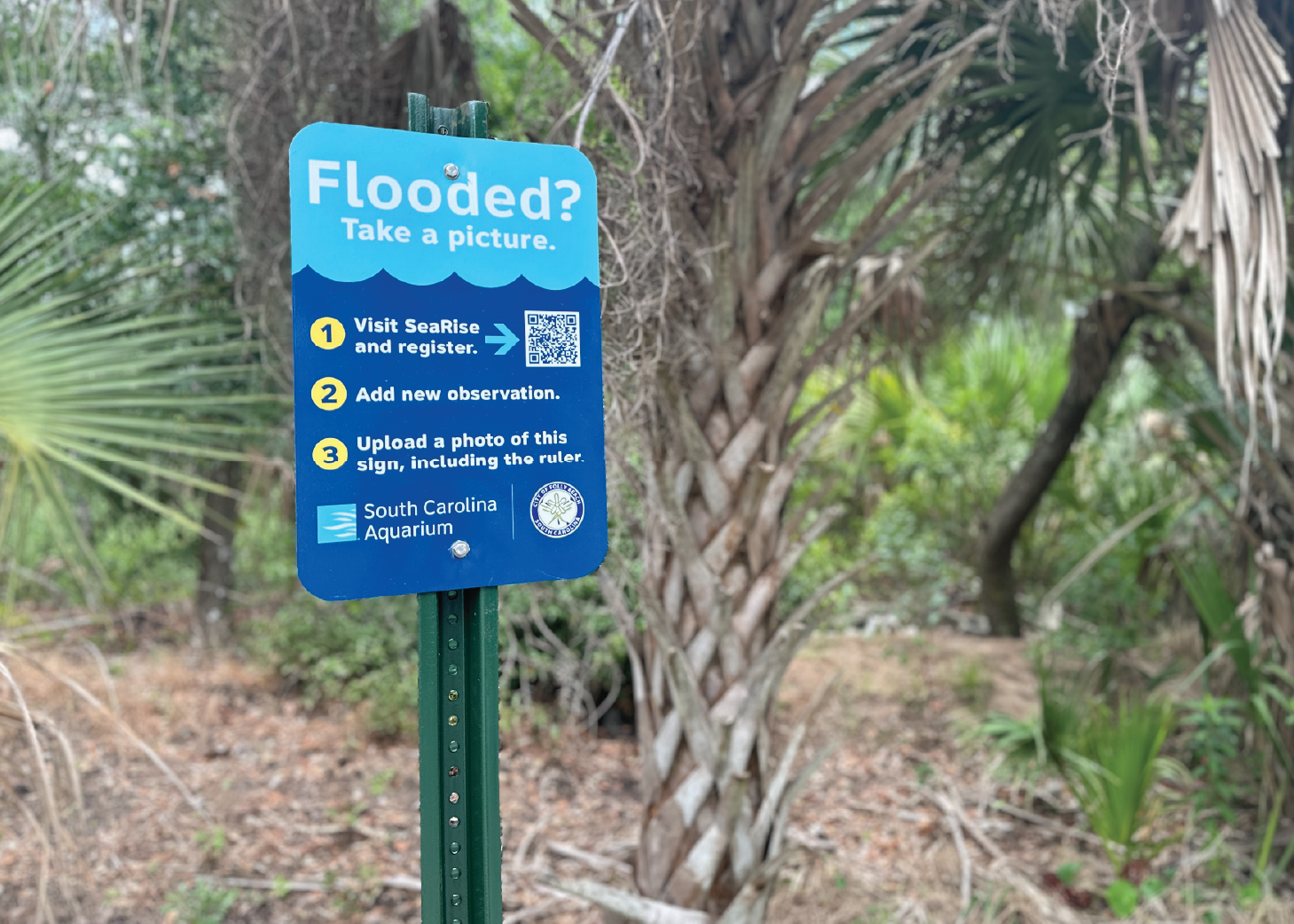 You can find 40 SeaRise signs (and counting!) throughout the Lowcountry.
You can find 40 SeaRise signs (and counting!) throughout the Lowcountry. A Milestone to Remember (2024)
By the continuous passion of dedicated citizen scientists, we reached a milestone 3 million pieces of debris collected and cataloged in the Litter Journal! The data recorded in the Litter Journal has proven how pervasive the plastic pollution problem is, but is also a tool to finding community-driven solutions.
 Citizen scientists of all ages are responsible for this incredible milestone!
Citizen scientists of all ages are responsible for this incredible milestone!As we reflect upon our conservation efforts over the last 25 years, the moments that mattered most were when we joined hands to support something bigger than ourselves. Just as a drop of water can lead to a ripple effect, your support makes all the small moments create a wave of change.
Join us for the next 25 years of inspiring conservation of the natural world!
Published May 8, 2025


